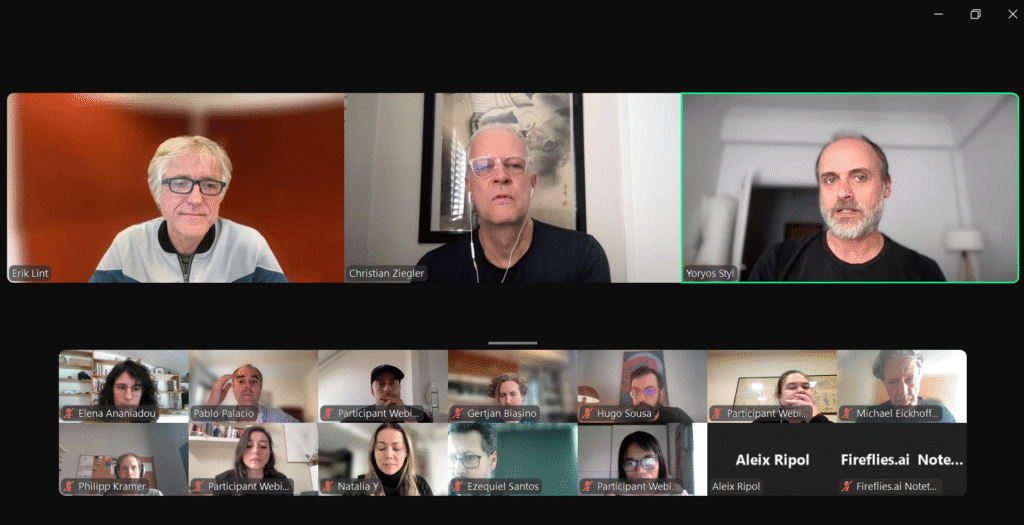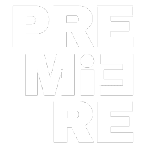The third webinar in the PREMIERE series explored the intersection of technology and creative processes in performing arts, focusing particularly on how AI tools can become integral to artistic creation. Moderated by Erik Lint (Head of IDlab, Academy of Theatre and Dance, Amsterdam University) and Pablo Palacio (artist, researcher, software developer, composer, Instituto Stocos), the session provided rich insights into the evolving human-machine relationship in performance contexts.
Erik Lint opened the discussion by framing technology as more than just tools but as “the art of making.” He emphasized that technology encompasses not only technical instruments but also how humans relate to each other and work within societal contexts. This perspective positions the body and movement at the center of technological exploration, particularly in dance and performance settings.
A key question that emerged was how artists position themselves regarding AI: Is it used as an autonomous agent, as a mere tool, or as an interactive system? Participants shared diverse experiences, with the artist Gertjan Biasino mostly utilizing AI “to make my work quicker” as a video editor and animator, while Fresne approached AI as a “creative collaborator” in free improvisation settings, appreciating it as “a different entity with a whole different worldview.”
Natalia shared her experience creating interactive theatre that uses AI to personalize stories based on audience input about their fears and dreams, resulting in what she described as “this indeterminacy of what the experience is going to be like.” Michael from the Academy of Digitality in Dortmund expressed interest in understanding AI as an embodiment, particularly in relation to humanoid robots, calling it “a burning issue” for defining the relationship between humankind and machines.

Pablo Palacio presented the AI Toolbox developed by Instituto Stocos as part of the PREMIERE project. This comprehensive suite combines machine learning algorithms for motion analysis, synthesis, visualization, and sonification. What makes this toolbox remarkable is that artists can train their own AI models with personal datasets rather than relying solely on pre-trained models. Hugo called this capability “the Holy Grail” of AI in performance contexts – the ability to create individualized movement models.
A fascinating demonstration showed non-anthropomorphic visualizations of movement, transforming human motion into abstract forms like beating hearts. Pablo explained this as part of their “expressive aliens” tool, which can “create a physiognomy, a kind of anatomy of a body, and then train it with specific qualities.”
The webinar highlighted several tensions inherent in using AI for artistic creation, with Pablo comparing AI’s data-driven approach to mythology, noting that “if you look back, you cannot escape.” Erik expanded on this, describing motion as “coming from the past, in the here and now, facing the future.”
One of the particapants, who worked with the toolbox, described finding particularly interesting moments where they “did not explain to the dancer what movements or what kind of parameters would influence the sound,” allowing human and machine to “learn from each other in a way.” This approach connects to what she called “presential knowledge and embodied knowledge.”
Pablo shared an experience where a dancer wearing a motion-capture suit created music with a synthetic flute so realistic that choreographer Elio “could not distinguish the clarinet from the air-blown sounds.” Pablo described this moment when boundaries blurred as “the most amazing thing” and “the dream.” Erik characterized such experiences as touching “a kind of spiritual moment” where “you sense the past and the future in the moment.”
The AI Toolbox presented will be made available as open-source in June, with hands-on seminars planned to introduce artists to these capabilities. This democratization of technology aligns with the PREMIERE project’s goal of making advanced creative tools accessible to a wider artistic community.
Throughout the webinar, participants returned to fundamental questions about human-machine relationships – not just as practical artistic concerns but as philosophical inquiries into how these technologies might reshape our understanding of creativity, embodiment, and collaborative creation.

